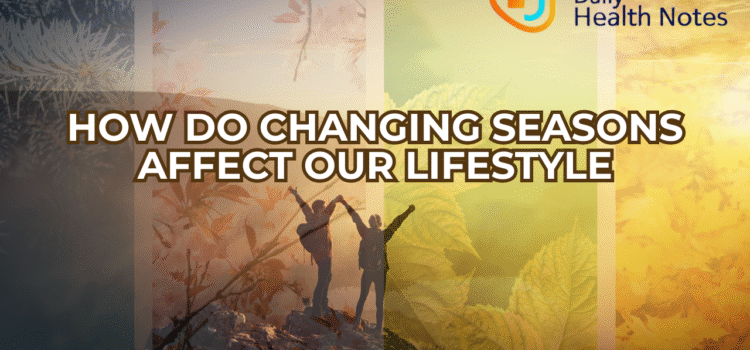
How Do Changing Seasons Affect Our Lifestyle?
Every year, as the calendar flips from sweltering summers to crisp autumns, frosty winters, and blossoming springs, millions of Americans encounter more than just wardrobe changes. The question “how do changing seasons affect our lifestyle?” is especially relevant in today’s fast-paced, health-conscious society. Understanding these patterns not only helps us adapt but empowers us to thrive throughout the year.
Why Seasonal Change Matters
Whether you love summer’s long evenings or wait eagerly for winter’s first snowfall, the changing seasons touch every part of our lives. From altering our mood and daily routines to influencing our diet and even our generosity, the rhythmic cycle of seasons shapes the American lifestyle more deeply than most realize.
The Psychology of Seasons in the USA
Mood and Mental Health
Seasonal Affective Disorder (SAD): About 5% of Americans are diagnosed with SAD each year, with another 10-20% experiencing mild symptoms. This condition—characterized by a lack of energy, mood swings, and depression—hits hardest during winter’s short daylight hours and cold temperatures.
Daylight & Happiness: Longer daylight in summer enhances ‘feel-good’ serotonin and can improve concentration and overall happiness, while shorter days in winter often lead to more sluggishness and isolation.
Generosity & Social Behavior: Research finds Americans tend to be more charitable and sociable in the winter, with holiday traditions driving increases in generosity and social gatherings.
Health Impacts of Seasonal Changes
Physical Health & Activity Levels
Activity Drop in Winter: Physical activity typically drops by about 9% in winter compared to summer, especially in women in the southeastern US. Colder temperatures and shorter days naturally discourage outdoor exercise, leading to more sedentary behavior.
Weight Fluctuations: There’s a modest but measurable increase in body weight during winter, with people consuming more calories and moving less.
Rise in Illnesses: Respiratory infections like the flu and colds are more prevalent during the winter due to increased indoor contact and weakened immune defenses. Spring and fall often trigger allergies, impacting millions of Americans.
Nutrition & Metabolism
Diet Changes: Americans typically eat more during the fall holiday season, with a focus on richer, higher-fat foods. Spring and summer diets shift towards fruits, vegetables, and lighter fare.
Lifestyle Adjustments: Adapting to Each Season
Tips to Thrive All Year
Maximize Natural Light: Spend time outdoors—even on cloudy days—to boost vitamin D and counteract seasonal dips in mood.
Stay Active: Adjust indoor routines to keep moving when it’s too cold or hot outside; try at-home workouts or join a gym.
Eat Seasonally: Incorporate fruits and vegetables in season to ensure a balanced nutrient intake.
Manage Stress: Holidays and seasonal transitions can boost stress and anxiety; practicing mindfulness, yoga, or meditation helps keep you grounded.
Maintain Social Connections: Make time for friends and family, especially during periods when isolation is more likely (like winter).
Quality Sleep: Maintain a regular sleep schedule, aiming for 7-8 hours per night to stabilize mood and energy.
Challenges People Face with Changing Seasons
Fatigue and Lethargy: Colder months are associated with higher rates of fatigue, which can affect motivation, work productivity, and general well-being.
Respiratory and Digestive Issues: Allergies, colds, and digestive upsets rise during seasonal transitions, often requiring changes in medication or diet.
Adaptation Stress: The abrupt transition from one season to another can disrupt body rhythms and trigger stress, anxiety, and even gastrointestinal discomfort.
US-Specific Data & Trends
Seasonal Affective Disorder affects about 10 million Americans—and women are 4 times more likely to be diagnosed than men.
Activity Patterns: 53% of Americans report being more physically active outdoors in warmer months.
Health Services Spike: Hospitals and clinics in the US often see surges of flu, respiratory illnesses, and allergies during winter and spring transitions.
Solutions: What Experts Recommend
Light Therapy: For those affected by SAD, using light therapy lamps during darker months is clinically proven to help.
Vaccination & Prevention: Staying updated on flu shots and allergy medications can minimize health risks during peak seasons.
Flexible Routines: Embrace flexible schedules that allow you to capitalize on good weather and daylight, boosting both productivity and wellness.
Real-World Example
Every fall in New England, local health departments run “Get Outside” campaigns, encouraging residents to walk in parks and take vitamin D supplements before the onset of true winter. Similar programs appear throughout the Midwest and Pacific Northwest, regions that see dramatic swings in daylight.
Final Thoughts
The answer to “how do changing seasons affect our lifestyle” reveals a deep interplay between mind, body, and environment. Being aware of these changes empowers you to make proactive, healthy choices all year—and makes each season an opportunity for growth.
What’s your experience with seasonal changes? Leave a comment below or subscribe for more expert wellness tips tailored to your lifestyle!












